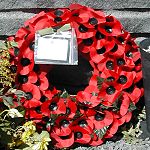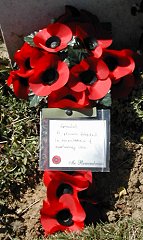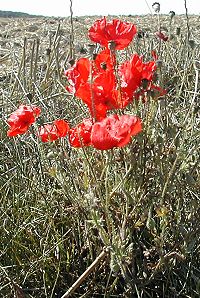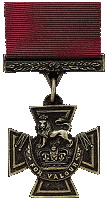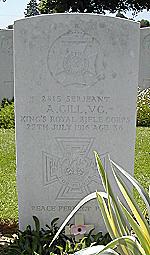| The
"poppy"
|
For British and Commonwealth people,
the poppy is the Remembrance flower since the 20s. It is worn during Armistice
commemorations and wraiths laid down of graves or monuments are often made
of artificial poppies. This symbol is the equivalent of the cornflower
for the French but its use is more wide-spread and maybe more meaningful.
During the Great War, poppies were among the first plants still growing and sprouting on the destroyed grounds. Soldiers used to tell that before the war they bloomed with white flowers but that having grown on a ground soaked with the blood of their fellows had made them become bright red. Several texts mention poppies and their strange presence on the battlefield. One of them, the famous poem "In Flanders Fields", is consider being at the origin of the use of the poppy as a Remembrance symbol. Miss Moira Michael, an American who worked then for the Young Men Christian Association (The YMCA, during the war this charity aimed at improving the every day life of soldiers), was upset by this poem and drafted another one as a reply: "The Victory Emblem". The emblem was naturally the poppy: its bloom reminds for ever that "the blood of the heroes never dies "... The first poppies were sold then worn in small number on November 9th, 1918 during a meeting of senior YMCA members at Miss Michael home. This precedent inspired the French representative, Mrs Guerin. She succeeded in contacting associations of the allied countries in order artificial poppies to be sold for the benefit of widows, orphans and veterans in need. The first "Poppy Day" and the first sales of poppies in Great Britain as well as in Australia took place on November 11th, 1921. Poppies were mostly bought from a French organization: profits served for helping the children of the destroyed regions and the fabrication was ensured by war widows. In 1921, war veterans' main Australian association imported a million tissue poppies made in French orphanages. Each poppy was sold a schilling and on this amount six pennies went to an association in charge of French children. Originally, the poppy was not officially associated to Anzac Day (the Australian Remembrance Day). That role occurred progressively. It would be bound to a practice begun on November 11th, 1993, when the Australian Unknown Soldier was buried in Canberra. Participants slide a poppy in the chink next to the name of a relative on the Hall of Memory walls where are registered the names of the war dead. A common way used to pay respect on the other monuments of the Commonwealth. Nowadays, in Great Britain as in Australia, poppies are still sold and worn in the buttonhole of poppies while the Armistice Day. Profits from sales are for charities. |
